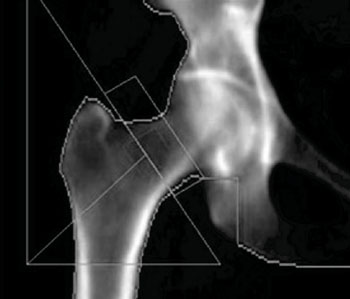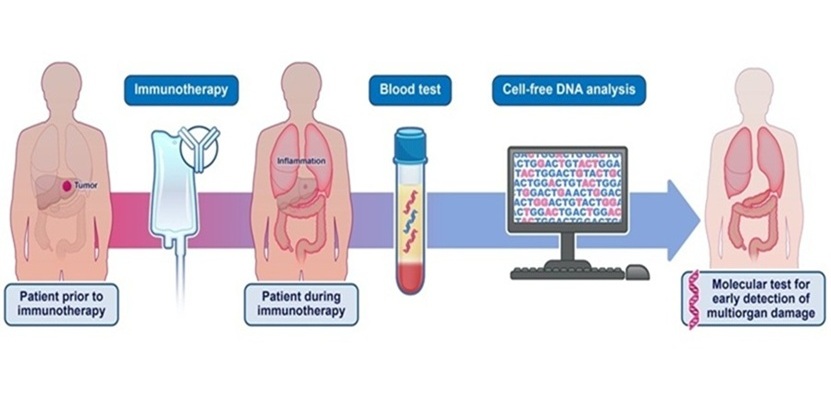Cytokine Serum Levels Increased in Osteoporosis
By LabMedica International staff writers
Posted on 28 Oct 2015
Interleukin 31(IL-31) is a proinflammatory cytokine mediating multiple immune functions, whose involvement in a wide range of diseases, such as atopic dermatitis, inflammatory bowel diseases and cutaneous lymphomas. Posted on 28 Oct 2015
Osteoporosis is a systemic skeletal disease characterized by decreased bone mass and microarchitectural deterioration of bone tissue and an excessive bone resorption and/or an inadequate bone formation results in a subsequent increase in bone fragility and susceptibility to fractures.

Image: Dual energy X-ray absorptiometry (DXA) scan of a hip for bone density measurement (Photo courtesy of Dr. Anthony Morrow).
Scientists at the University of L’Aquila (L’Aquila, Italy) enrolled in a study 56 postmenopausal females with osteoporosis whose mean age 65.39 ± 9.68 years and 26 age-matched healthy postmenopausal women as controls. Bone mineral density (BMD) measurements were performed by using calcaneal quantitative ultrasound (QUS) technique, confirmed at the lumbar spine and hip by dual energy X-ray absorptiometry (DXA). Both patients and controls were divided according to age: less or more than 65 years, and disease severity: T-score levels and presence of fractures.
The IL-31 protein levels were evaluated using a standard sandwich enzyme-linked immunosorbent assay (ELISA) kit (USCN LIFE SCIENCE; Houston, TX, USA). The absorbance was measured at 450 nm by a microspectrophotometer model 340 ATTC (SLT Laboratory Instruments; Salzburg, Austria) and the results were expressed as pg/mL with the minimum detectable level of IL 31 is less than 5.5 pg/mL.
Osteoporotic patients exhibited elevated levels of serum IL-31 compared with healthy controls and IL-31 expression was higher in over 65 years old patients compared to age-matched controls. In younger subjects no statistically significant differences were detected between patients and controls. No statistically significant differences were found between IL-31 levels in patients affected by mild compared to severe osteoporosis neither between fractured osteoporotic women and those without fractures.
The authors concluded that there was an increase of IL-31 serum levels in postmenopausal women with decreased BMD. Although they did not reflect the severity of osteoporosis and/or the presence of fractures, they clearly correlated with age, as reflected by the higher levels of this cytokine in aged patients. The study was published on October 8, 2015, in the journal BMC Immunology.
Related Links:
University of L’Aquila
USCN LIFE SCIENCE
SLT Laboratory Instruments














